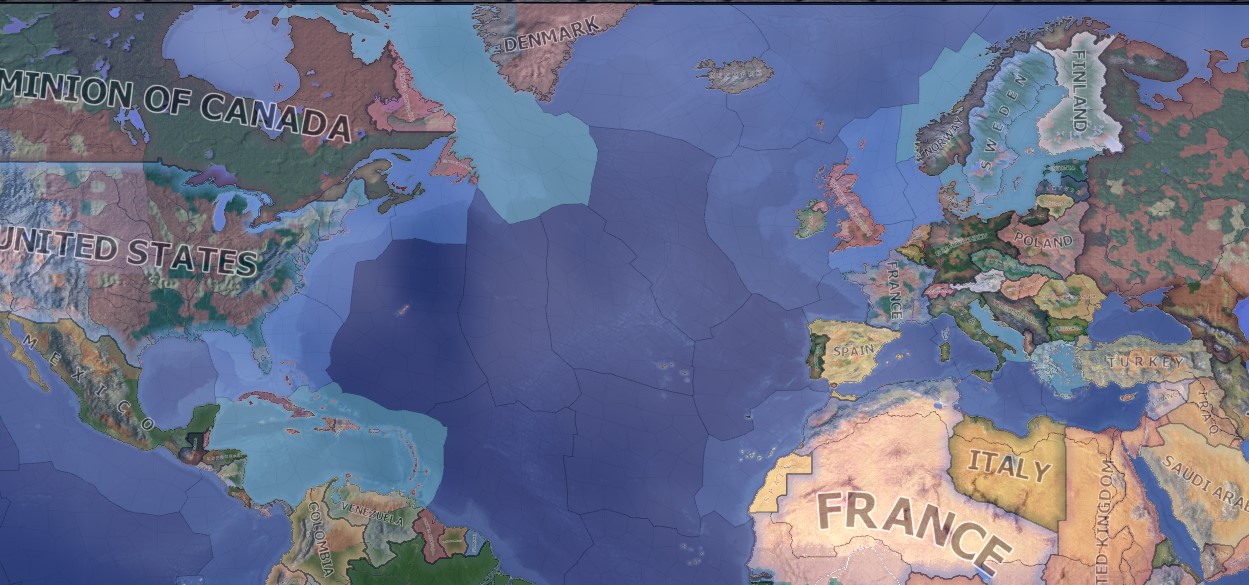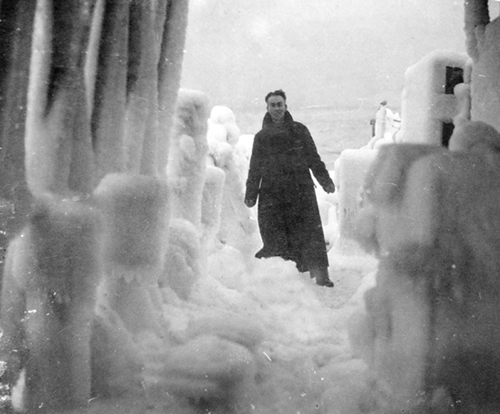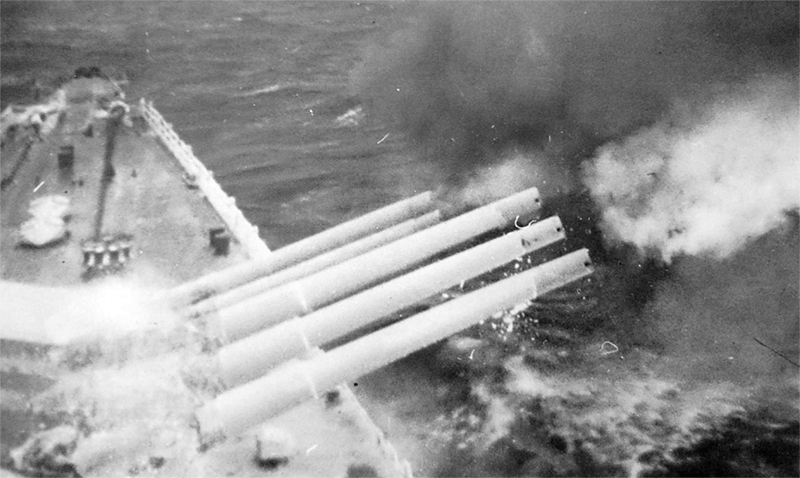Today we are going to talk about Naval Terrain and start talking about some of the core changes to the naval game.
We felt that we wanted to make where you fight more important, and where possible give advantages to people fighting in home waters. The sea in HOI4 has previously generally been either “ocean” or “ocean in range of enemy land based aircraft”, and otherwise mattered little. That’s about to change!
To do this we are introducing several terrain types for seas. These impact what ships work best there, how mines function as well as some other stuff. In total seas are divided into 4 types:

Regular Ocean has no special effects, so its similar to plains on land.

Fjords & Archipelagos come with some hefty penalties to big ships, but make it easier to hide (all numbers still quite work in progress btw!)

Deep Oceans on the other hand are not good for light ships. They are also not good place to mine due to their depth and vastness. Subs like this area (mid atlantic gap = bae) because it is also easier to hide here.

Shallow seas are a bit harder to maneuver well in, and not a great place for submarines.
There is also some possible modifiers on them:

Arctic Water is a general bad area to operate in, wearing your ships down and causing potential accidents. It also increases casualties if ships sink for any reason. This modifier works much like Extreme Cold on land so it depends on the time of year and temperature.

Some places in the world have quite a lot of sharks and there are a lot of stories of heavy casualties after the sinking of ships due to sharks. The USS Indianapolis is a famous example where due to several reasons, sharks among those, something like 75% of the crew were lost. It is honestly mostly a cool flavor thing though we wanted to have in
Your performance in these are also affected by Admiral Traits. As we have shown a bit before your Admirals can now gain traits for different terrain types.


Around the Dutch East Indies several of the terrain types are visible (the colors on land in this mapmode are still in need of some tweaking btw). The brightest there is archipelagos with the other shades of blue being shallow seas and regular ocean and the darker areas is deep oceans.
This is what the Atlantic and Europe looks like:

Notice the deep ocean in the Atlantic and the fjords around scandinavia.
That’s it for this today, next week we are going to start going over some of the more core naval changes. Seeya then!
We felt that we wanted to make where you fight more important, and where possible give advantages to people fighting in home waters. The sea in HOI4 has previously generally been either “ocean” or “ocean in range of enemy land based aircraft”, and otherwise mattered little. That’s about to change!
To do this we are introducing several terrain types for seas. These impact what ships work best there, how mines function as well as some other stuff. In total seas are divided into 4 types:

Regular Ocean has no special effects, so its similar to plains on land.

Fjords & Archipelagos come with some hefty penalties to big ships, but make it easier to hide (all numbers still quite work in progress btw!)

Deep Oceans on the other hand are not good for light ships. They are also not good place to mine due to their depth and vastness. Subs like this area (mid atlantic gap = bae) because it is also easier to hide here.

Shallow seas are a bit harder to maneuver well in, and not a great place for submarines.
There is also some possible modifiers on them:

Arctic Water is a general bad area to operate in, wearing your ships down and causing potential accidents. It also increases casualties if ships sink for any reason. This modifier works much like Extreme Cold on land so it depends on the time of year and temperature.

Some places in the world have quite a lot of sharks and there are a lot of stories of heavy casualties after the sinking of ships due to sharks. The USS Indianapolis is a famous example where due to several reasons, sharks among those, something like 75% of the crew were lost. It is honestly mostly a cool flavor thing though we wanted to have in
Your performance in these are also affected by Admiral Traits. As we have shown a bit before your Admirals can now gain traits for different terrain types.

- Cold Water Expert reduces the impact of arctic waters
- Inshore Fighter gives combat bonuses and speed when operating in Fjords and Archipelagos
- Blue Water Expert gives combat bonuses and speed when operating in deep oceans
- Green Water Expert gives combat bonuses and speed when operating in shallow seas

Around the Dutch East Indies several of the terrain types are visible (the colors on land in this mapmode are still in need of some tweaking btw). The brightest there is archipelagos with the other shades of blue being shallow seas and regular ocean and the darker areas is deep oceans.
This is what the Atlantic and Europe looks like:

Notice the deep ocean in the Atlantic and the fjords around scandinavia.
That’s it for this today, next week we are going to start going over some of the more core naval changes. Seeya then!
Rejected Titles:
- Naval “terrain” is an oxymoron, like “Military Intelligence”
- SHARKS
- Fjords, or how to make Scandinavia relevant this DLC
- Not from the creators of Sharknado, comes SharkBlizzard
- Podcat read a book about how horrible it was being on a destroyer in the arctic



